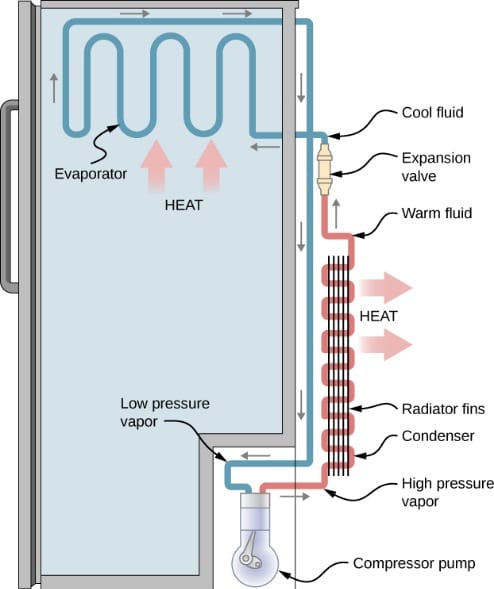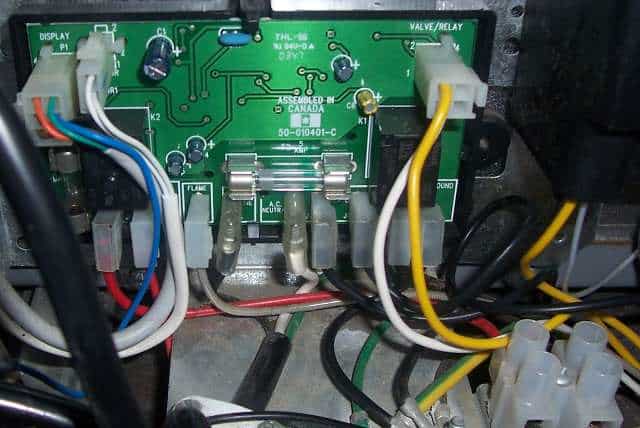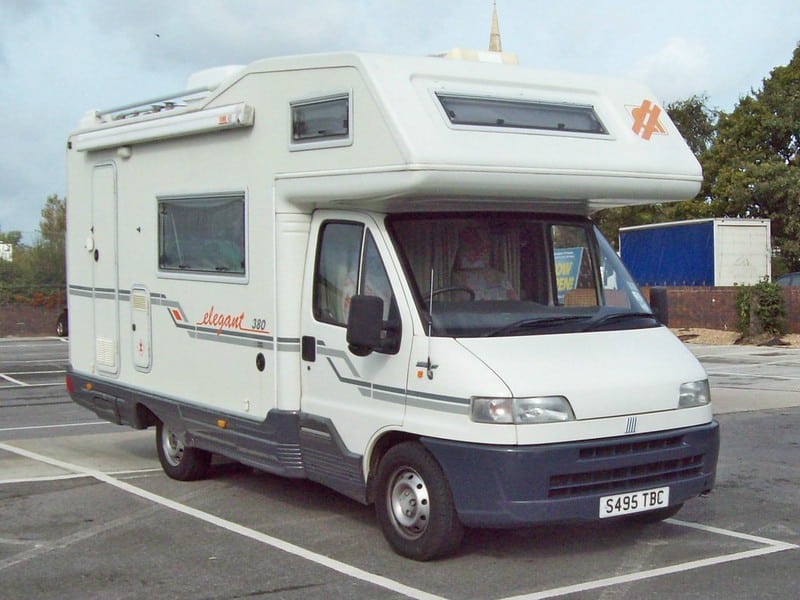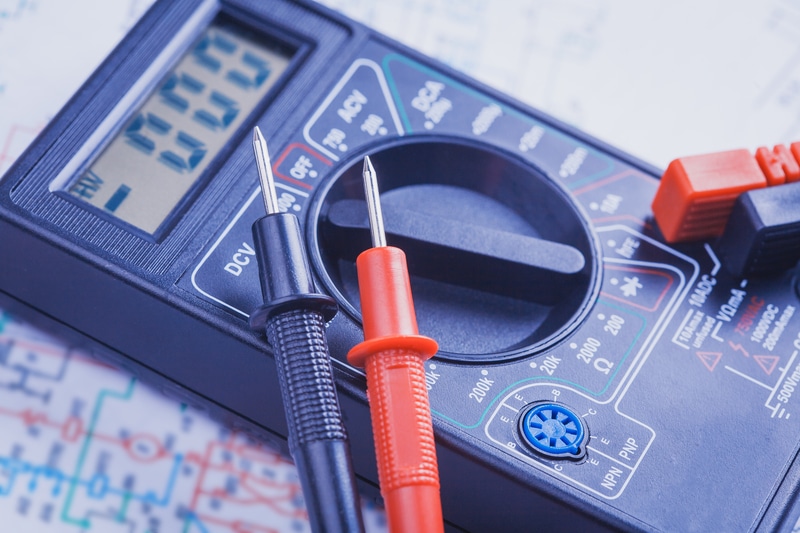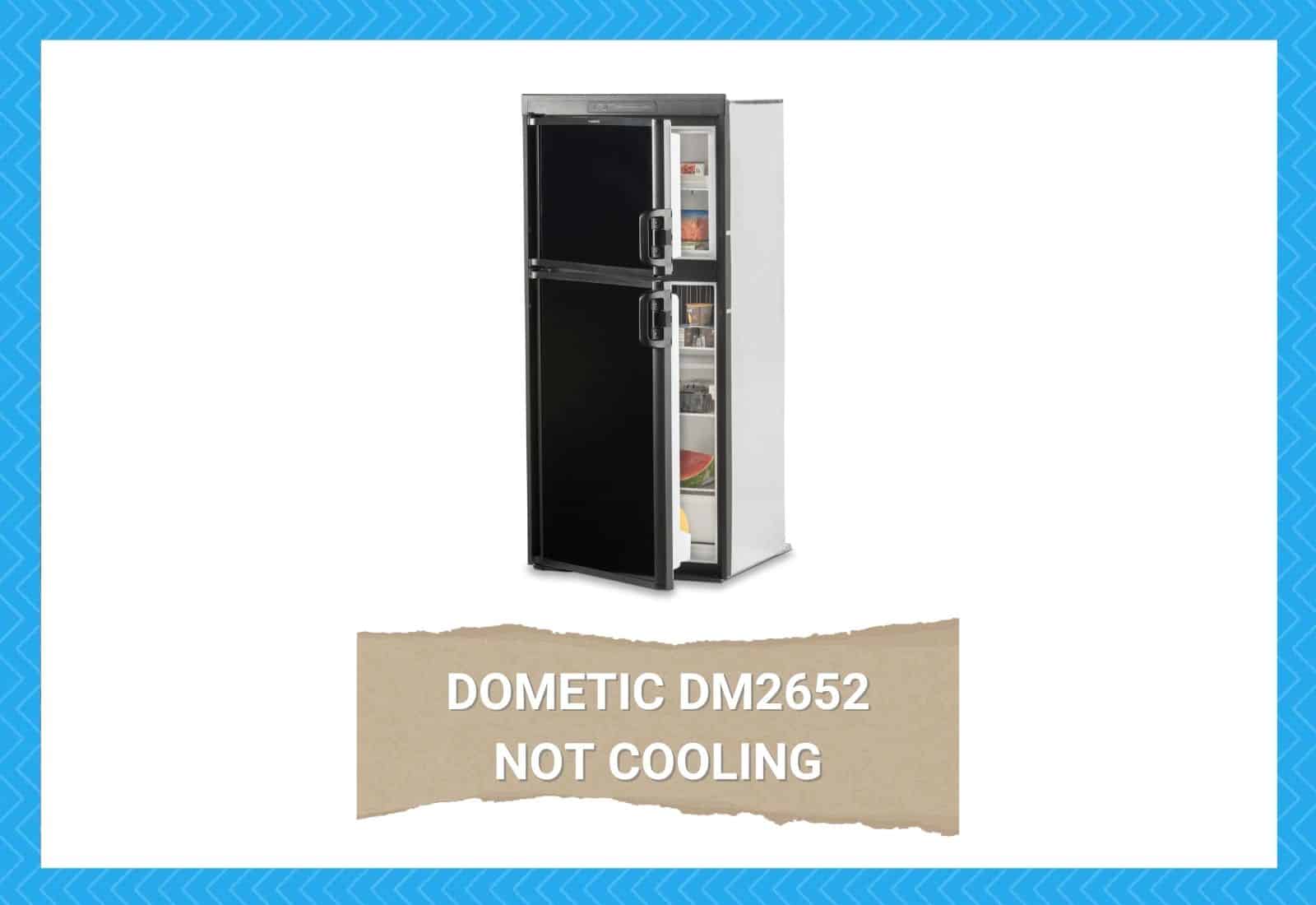
Dometic is a well-known manufacturer of outdoor comforts, including electric coolers, ice chests, portable batteries, and solar panels. But in the world of recreational vehicles, it is famous for its refrigerators. Its bestseller—DM2652.
You may not recognize the model number, but if you check the specs of your RV refrigerator, there’s a good chance it’s the same one.
This model has been selling like hotcakes since its release and for good reasons. Besides excellent storage capacity and longevity, it also boasts a dual-fuel power system that runs on electricity and propane.
How Dometic DM2652 Works
Unlike traditional refrigerators that operate when plugged into an electrical outlet, the DM2652 can also be powered by propane. This is brilliant because we all know fridges are power guzzlers. On average, a standard-size unit can consume around 250 watts of electricity per hour.
Your solar panel might be able to meet that much load requirement but at the expense of your other appliances. With a propane fuel option, you can conserve your vehicle’s power to make it through the trip without recharging.
But how can fire produce cool?
First of all, DM2652 doesn’t run on propane alone. You can choose to power it with 120-volt AC if there’s an excess supply.
Also, if you prefer propane, you still need electricity to light the burner, but it won’t cost your RV too much power. The igniter switch is usually connected to the 12-volt battery.
In a traditional refrigerator, coolant is pressurized to turn into gas as it flows into the outside coil. Then, it becomes liquid again after making contact with the cool air in the kitchen. At a high temperature, this liquid absorbs the heat inside the freezer as it enters the unit’s interior coil.
In a DM2652, coolant (a mix of water, ammonia, and hydrogen) is heated in a container at the base of the fridge’s flue.
Ammonia’s boiling point is −33.34 °C, so it doesn’t take much heat to turn it into gas. It evaporates and enters the condenser while water is still in a liquid state and flows from the separation chamber into the absorber chamber.
The gas ammonia quickly transforms into liquid as it cools down in the condenser. Then, it combines with hydrogen inside the coil within the freezer
And as it happens, it absorbs all the heat in the freezer before turning into gas ammonia again. In its final stage, ammonia meets with the water it purged from the beginning and gets absorbed.
Understanding this process helps you diagnose issues more quickly.
For instance, by knowing that ammonia has a low boiling point, you can tell that if there’s more heat within the coils than necessary, the ammonia might not undergo condensation and therefore fail to absorb the heat in the freezer.
And that’s just one of the possible reasons your unit isn’t cooling.
How to Fix Dometic DM2652 Not Cooling?
When you open the freezer and don’t see any icicles on the walls or the water in the ice cube maker is still water, it means your refrigerator isn’t cooling.
Furthermore, you will most likely see the control panel’s check light activated, indicating that the unit isn’t getting power. Here’s what you should do:
1. Check the circuit breaker
Before trying complex fixes, start with the most straightforward checks. First, check if the refrigerator is properly plugged in. You can access the plug and outlet outside through a small compartment door leading to the equipment’s back.
Also, check the circuit breaker and see if the switch for the refrigerator is off. If it’s on, it means it wasn’t tripped, and the unit should get power. Try switching it off and on again and see if the auto light on the control panel comes on.
You can also check the refrigerator’s interior light to confirm if it’s not just the panel that needs to be fixed. The light must come on if there’s power coming through.
In the circuit breaker board, there’s another section where all the circuits powered by your RV’s 12-volt battery, including the control panel, can be found. Check that, too, in case only the panel has issues.
2. Check if the thermostat is in place
Below the freezer, you’ll see panels lined up vertically in the back. That’s the evaporator. On the right side of it, you’ll find a sleeve clipped onto one of the panels and connected to a cable that runs to the back of the refrigerator.
On the wall beside the sleeve is a simple legend of the temperatures the fridge can handle. You can move the sleeve up or down to control the fridge’s temperature.
Sometimes, when you put items inside the refrigerator, you may accidentally hit the cable, causing the sleeve to come off. That, too, can cause your refrigerator to stop cooling. So, before poking your multimeter everywhere, check if the thermostat is in place.
3. Check if the rig is level
There are three things your refrigerator needs to function correctly—enough power, excellent airflow, and a level base support.
You’ve already started checking the power (we’ll skip the airflow for now) but before doing the more thorough electrical tests, check if your RV is parked on stable ground. Even the slightest uneven settlement will cause the fridge to tilt.
Remember that your equipment uses actual flames, and the burner that produces those flames is much smaller than the ones on your stovetop. Therefore, a slight tilt could cause the flame to miss its target, sending inadequate heat to the heating element.
4. Check the ventilation
You’ll find a fan on the back of your fridge that allows air to flow freely within the compartment and through the vent.
Usually, there’s a vent at the base and another at the top. Excellent exhaust management will keep the back of your refrigerator well-ventilated, preventing overheating and dampness.
5. Test the fuses for connectivity
Now it’s time to give your refrigerator a more through check. This may seem too complicated for a non-professional to handle, but as an RV owner with a DM2652, consider it a must-have skill.
Remember that help will not always be available. What if your fridge malfunctions, you still have two weeks’ worth of food inside, and you’re in the middle of nowhere? Will you cancel your trip, pack up, and look for a technician? You can save time and budget if you fix it yourself.
You need a multimeter to check the fuse. There are two fuses on the control board for AC power and one along one of the cables for DC power. But before you test them for connectivity, unplug your AC and battery to remove the power in the control board.
6. Test for power supply
Done confirming connectivity through the fuses? Plug the AC and battery back in to check if AC and DC are coming in and where to.
You will still need the multimeter for this test. There are several places to check. You may refer to the manufacturer’s manual to avoid confusion. It provides a list of all the connectors you need to test.
Rule of Thumb
An easier way to troubleshoot a non-cooling RV refrigerator is to remember three basic principles:
- If your unit has electrical power, even though the propane is working, the heating element must be worn out or corroded and needs to be replaced.
- If the control panel has electrical power, but the propane is not working, the igniter switch must be broken.
- If your unit isn’t getting electrical power and propane, the problem must be coming from the control board.
Conclusion
Your refrigerator is one of the essential appliances in your RV. You can only afford to have it broken for a couple of days. A lot of your food, particularly meat and vegetables, spoil fast. Things can get worse if you’re currently down south snowbirding.
It doesn’t hurt to invest time in gaining technical skills, especially if you see yourself traveling the country in your RV often. You probably spent a considerable chunk of your life savings to purchase it. You want to get the most value from that investment by being able to fix any issues more quickly.
Even if you’ve convinced someone tech-savvy to tag along, they won’t always be around when problems happen. You will have to do it at some point, so you should step up your game.

